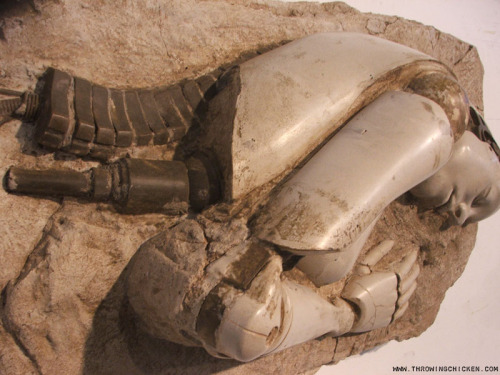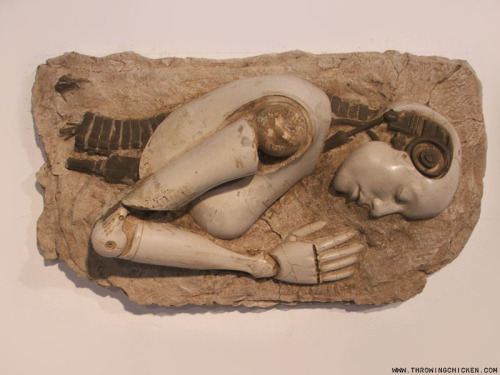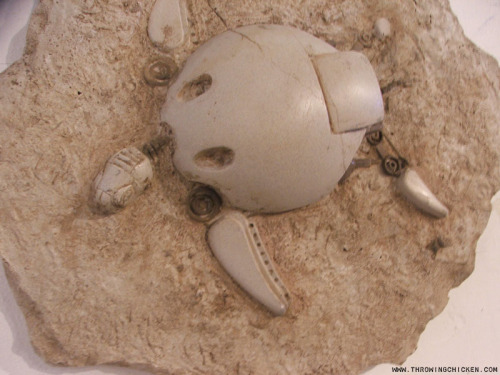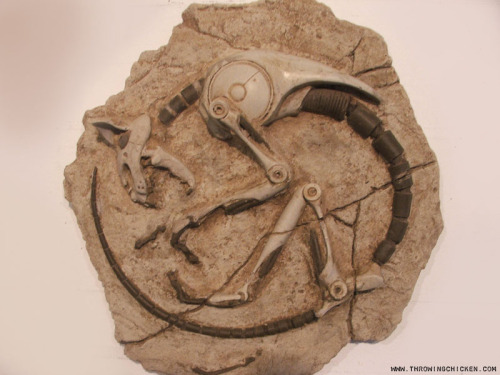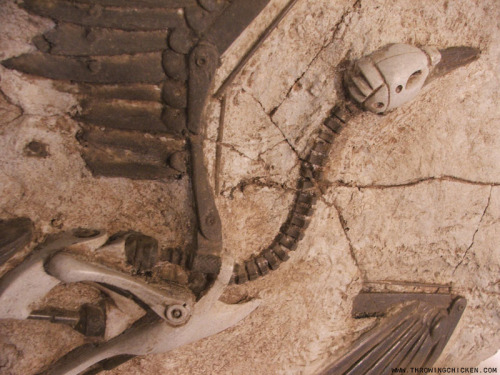@ultrainfinitequest
@ultrainfinitequest
In his classic tale Journey to the Center of the Earth, author Jules Verne dreamed of reaching the center of our planet through volcanic tubes. In the 1960s, scientists took up that challenge and tried to drill down into the earth’s mantle, but abandoned the project due to a lack of funding. Now, a team of scientists aboard the research vessel JOIDES Resolution is working to bore a hole deep into the Atlantis Bank in the Indian Ocean to collect samples of the crust and eventually break through into the mantle. Geologist Henry Dick, co-chief scientist of the expedition, joins Ira for an update on the progress of the project and explains what these samples could reveal about the formation of the planet.
More Posts from Secretagentpeptidebond and Others
Learn Everything You Need To Know About Chemicals In Your Food in 4 Easy Steps!
Step One
Obtain High School level Chemistry textbook.

Step Two
Open the book to chapter one, section one.

Step Three
Locate and identify the goals of chapter one: basic definition of chemistry.

Step Four
Discover that EVERYTHING IS MADE OF CHEMICALS.

Whew. That was pretty scary, wasn’t it? Education is hard. Learning about scary chemicals is a big adventure. But aren’t you glad you pulled through? I’m glad we had this talk.




PUMPKIN-SPICED FLUORESCENCE
Inside a pumpkin, seeds don’t need much chlorophyll—the molecule that helps plants convert light into food—because there isn’t a lot of light deep inside the fruit’s flesh. Instead of chlorophyll, the green seeds are chock-full of protochlorophyllide, a highly fluorescent molecule that glows orange-red under ultraviolet light and can be converted into chlorophyll a by an enzyme in the seeds. The enzyme reduces protochlorophyllide to produce chlorophyll when the enzyme encounters light, which occurs only after the seed has left the pumpkin and therefore needs to start producing its own food so it can grow. Helmut Brandl, a science communicator and professor at ETH Zurich, extracted this protochlorophyllide by grinding up pumpkin seeds and mixing them with nail polish remover (bottom row).
Submitted by Helmut Brandl
Enter our photo contest here!
Related C&EN content:
Happy Little Plant Cells
Look Deep Inside



A little friendly fire for @yo-yo-yoshiko. Don’t expect any more of these, I want points dammit!
[ Find me on Art Fight! ]

Despite its appearance, there is order in the chaos of turbulence. These snapshots from a turbulent channel flow simulation outline these coherent structures in black. The top photo shows a top view looking down on the channel and the bottom image shows a side view of the channel. It is thought that studying these coherent structures may help shed light on turbulence and its formation, which remains one of the great open questions of classical physics. (Photo credit: M. Green)

‘BLOOD LAMP’ Mike Thompson, an artist based in Amsterdam, wanted to design a piece that forced people to think about the cost of the power they use. So he made a lamp lit with the user’s blood. His “Blood Lamp” glows thanks to a reaction with luminol, a molecule used in police forensics that gives off electric blue light when exposed to an iron-rich protein in blood called hemoglobin. Iron atoms catalyze the oxidation of luminol, creating a high-energy, unstable peroxide molecule that releases energy as blue light as it relaxes to its low-energy ground state. After the user adds blood and the reaction consumes all of the luminol, the light fades, and the lamp can never be used again.
Credit: Mike Thompson
Related C&EN Content:
Counting CD4+ T Cells By Chemiluminescence
Plane To See



In ‘Wild Design,’ Vintage Illustrations Expose the Patterns and Shapes Behind All Life on Earth

What is the shape of a falling raindrop? Surface tension keeps only the smallest drops spherical as they fall; larger drops will tend to flatten. The very largest drops stretch and inflate with air as they fall, as shown in the image above. This shape is known as a bag and consists of a thin shell of water with a thicker rim at the bottom. As the bag grows, its shell thins until it ruptures, just like a soap bubble. The rim left behind destabilizes due to the surface-tension-driven Plateau-Rayleigh instability and eventually breaks up into smaller droplets. This bag instability limits the size of raindrops and breaks large drops into a multitude of smaller ones. The initial size of the drop in the image was 12 mm, falling with a velocity of 7.5 m/s. The interval between each image is 1 ms. (Photo credit: E. Reyssat et al.)
-
 doegred-main liked this · 9 years ago
doegred-main liked this · 9 years ago -
 fieldofheathers-stuff liked this · 9 years ago
fieldofheathers-stuff liked this · 9 years ago -
 lucifers-cuvette reblogged this · 9 years ago
lucifers-cuvette reblogged this · 9 years ago -
 timcookieman liked this · 9 years ago
timcookieman liked this · 9 years ago -
 stenkish reblogged this · 9 years ago
stenkish reblogged this · 9 years ago -
 ultrainfinitequest reblogged this · 9 years ago
ultrainfinitequest reblogged this · 9 years ago -
 ultrainfinitequest liked this · 9 years ago
ultrainfinitequest liked this · 9 years ago -
 secretagentpeptidebond reblogged this · 9 years ago
secretagentpeptidebond reblogged this · 9 years ago -
 nezya liked this · 9 years ago
nezya liked this · 9 years ago -
 mermaidskey reblogged this · 9 years ago
mermaidskey reblogged this · 9 years ago -
 pitecus liked this · 9 years ago
pitecus liked this · 9 years ago -
 mostlyharmlesstmblrgremlin reblogged this · 9 years ago
mostlyharmlesstmblrgremlin reblogged this · 9 years ago -
 mostlyharmlesstmblrgremlin liked this · 9 years ago
mostlyharmlesstmblrgremlin liked this · 9 years ago -
 luisdg85 liked this · 9 years ago
luisdg85 liked this · 9 years ago -
 bkweb426 liked this · 9 years ago
bkweb426 liked this · 9 years ago -
 lucifers-cuvette liked this · 9 years ago
lucifers-cuvette liked this · 9 years ago -
 puzzlesavant reblogged this · 9 years ago
puzzlesavant reblogged this · 9 years ago -
 puzzlesavant liked this · 9 years ago
puzzlesavant liked this · 9 years ago -
 saplingsoul liked this · 9 years ago
saplingsoul liked this · 9 years ago -
 tropicalhomestead liked this · 9 years ago
tropicalhomestead liked this · 9 years ago -
 amndkng liked this · 9 years ago
amndkng liked this · 9 years ago -
 raeality liked this · 9 years ago
raeality liked this · 9 years ago -
 eaglesnotforks liked this · 9 years ago
eaglesnotforks liked this · 9 years ago -
 sciencefriday reblogged this · 9 years ago
sciencefriday reblogged this · 9 years ago
